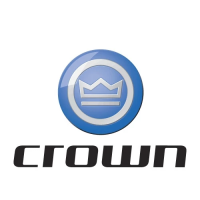29
28
Traveling
Traveling
Traveling
BEFORE YOU DRIVE
Fasten your seat belt and pull it snug.
Adjust the operator seat and steering wheel to a
comfortable position. Make sure that you can fully
operate the controls.
TRAVEL DIRECTION AND SPEED
Move the direction control away from you, toward the
mast, to travel forks first. Move the control toward you,
away from the mast, to travel power unit first (forks
trailing).
Use the accelerator on the floor (right pedal) to control
travel speed. The farther you push it down, the faster
the truck will go.
When you sit down you must place the direction
control in neutral before you select a direction of travel.
Note:
You must use full acceleration (with the inching/
brake pedal applied) to obtain maximum performance
for any hydraulic operation.
AVOID TRUCK DAMAGE WHEN CHANGING TRAVEL DIRECTION
You can damage the truck if you are traveling too fast
when changing direction of travel.
Do not change direction of travel until the truck has
slowed to about 5 mph or less.
Know the Hazards
SLOW DOWN FOR SPILLS OR WET FLOORS
Powder or liquid spills can cause slippery floors.
Slow down or you could lose control of steering and
braking. Be careful and allow for a longer
stopping distance.
Don't run over objects on the floor.
POWER UNIT SWING
Be careful turning while traveling forks first. The power
unit will swing wide in the opposite direction. Make
sure you have clearance, and watch out for people in
the area.
KNOW THE OUTDOOR HAZARDS (see page 30)
Outdoor usage of this truck requires even more care,
especially when operating on gravel, unpaved surfaces,
uneven terrain, or when snow, ice or water is present.
PREVENT DAMAGE TO TRUCK
Slow to 5 mph or less before reversing direction
of travel.
Continued next page...
OPTIONAL INVERSION CONTROL
With this option your company can set a speed range
at which the truck will change travel direction.
Use the service brake to slow down or stop your truck.

